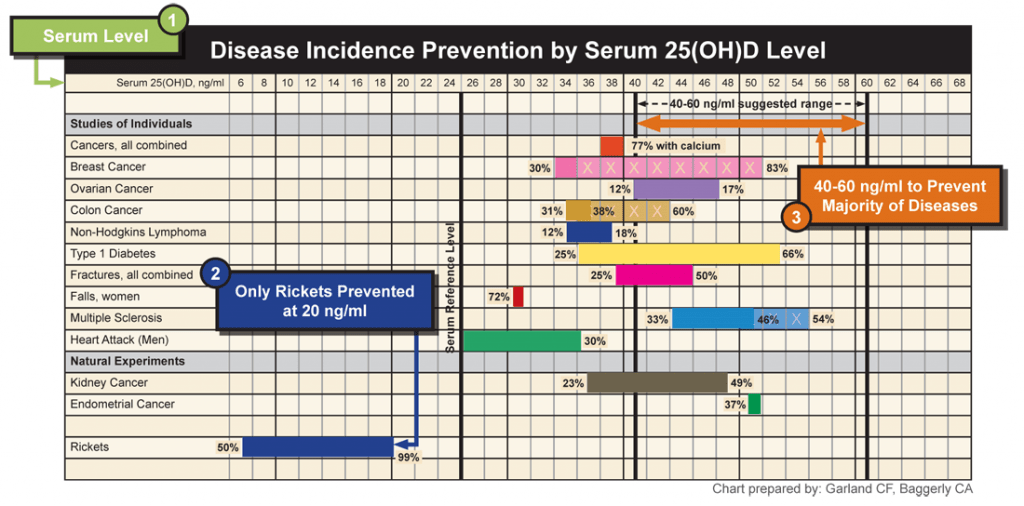Published on August 31, 2017
Why is vitamin D important?
GrassroosHealth summarized many different research papers into one chart in order to explain why vitamin D levels are critical to disease prevention:

What? How do I read this?
GrassrootsHealth took 14 different research papers (you can google them if you download the chart and read the fine print) on vitamin D and different conditions. For each condition, this chart shows an approximate reduction in risk by raising vitamin D levels from 25 ng/ml (62 nmol/L) to the amount listed along the top of the chart.
Why 25 ng/ml (62 nmol/L)?
Because the average US vitamin D blood level is approximately 25 ng/ml. In Europe and Canada, they measure differently, so that amount is 62 nmol/L. (Average levels for women and children)
An Example
Let’s use Breast Cancer as an example, the line with the long pink bar. This chart tells you that just raising your level from 25 ng/ml to 32 ng/ml will reduce your breast cancer risk by 30%. But… if you raised it to 52 ng/ml, then the reduction in risk gets even better – you reduce your risk by 83%.
Where do you want to be?
Now that you can read the chart you probably want to point to the right side and say, “I want my level there.” But what do you do next?
- Test your level. You can use your doctor, ask for a 25(OH)D test, or do it from the comfort of your home.
- Get the actual number – not that it is “OK” or “a little low”. At GrassrootsHealth we always give you your number, and we keep track of past tests so that you can track your progress.
- Use this calculator to approximate how much more supplement you will need to raise your level the desired amount.
- Test again in 3-6 months. Wait at least 2 months, as that is how long it take vitamin D to stabilize in your blood after a change.
Why can’t we just recommend a supplement level?
Because there is a six-fold difference in how supplements are processed for different people. That means that for the same supplement amount, say 5000 IU/day, we have found that some people have vitamin D levels as low as 20 ng/ml and others as high as 120 ng/ml.
Want to read the fine print?
Download the pdf of this chart:
- US Version in ng/ml
- Canadian / European Version in nmol/L
- Finnish Translation
- For pregnancy conditions and early childhood

